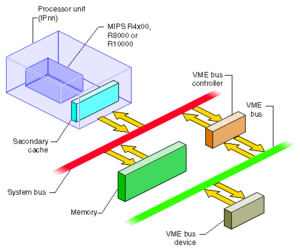Bus Systems
Bus System is a single computer bus that connects the major components of a computer system. The technique was developed to reduce costs and improve modularity. It combines the functions of a data bus to carry information, an address bus to determine where it should be sent, and a control bus to determine its operation. Although popular in the 1970s and 1980s, modern computers use a variety of separate buses adapted to more specific needs.
Many early electronic computers were based on the First Draft of a Report on the EDVAC report published in 1945. In what became known as the Von Neumann architecture, a central control unit and arithmetic logic unit were combined with computer memory and input and output functions to form a stored program computer.The Report presented a general organization and theoretical model of the computer, however, not the implementation of that model.Soon designs integrated the control unit and ALU into what became known as the central processing unit. Computers in the 1950s and 1960s were generally constructed in an ad-hoc fashion. For example, the CPU, memory, and input or output units were each one or more cabinets connected by cables. Engineers used the common techniques of standardized bundles of wires and extended the concept as back planes were used to hold printed circuit boards in these early machines. The name bus was already used for bus bars that carried electrical power to the various parts of electric machines, including early mechanical calculators.The advent of integrated circuits vastly reduced the size of each computer unit, and buses became more standardized.Standard modules could be interconnected in more uniform ways and were easier to develop and maintain.
